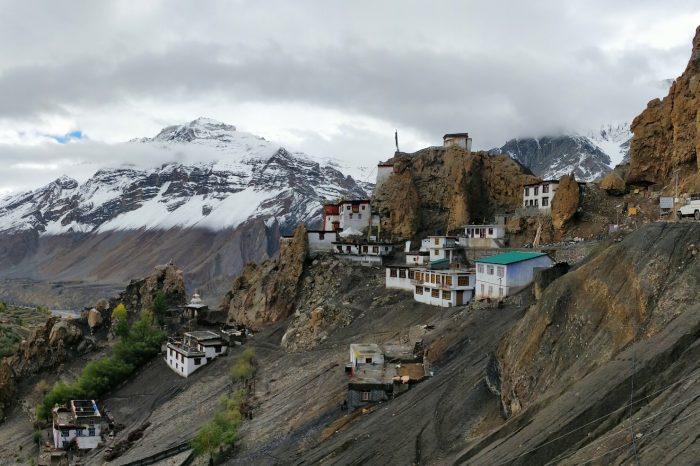Spiti Valley
Related Tours
About Spiti Valley ‘This is no place for men, surely the Gods must live here’ very aptly described by Rudyard Kipling about Spiti. Almost a century has gone by but things have barely changed here as even today it is […]
About Spiti Valley
‘This is no place for men, surely the Gods must live here’ very aptly described by Rudyard Kipling about Spiti. Almost a century has gone by but things have barely changed here as even today it is relatively unknown and hidden between the valleys and mountains. Nestled in the Trans Himalayan ranges in the Himachal Pradesh, this cold desert unquestionably spellbinds you.
Spiti means ‘the land in middle’ i.e. the land in the middle of India and Tibet. Spiti is located at a very high altitude (12500 feet/ 3600 meters) in the eastern part of Himachal Pradesh bordering Ladakh in the North, Tibet in the East and Kullu Valleys in the South. Unlike the other high density tourist places in Himachal Pradesh, like Simla, Manali, etc. this part is absolutely untouched and unexplored making it the real paradise.
The Rohtang La at 13054 feet (3979m) seperates Lahaul and Spiti from Kullu Valley. Further yet another higher pass known as Kunzum La at 15059 feet (4590 m) cuts off Lahaul and Spiti from each other.
Age old monasteries; quaint hamlets; majestic, snow-capped mountains; azure sky; verdure forests; blue-grey meandering rivers; colourful, fluttering Bhuddhist flags; spinning, large prayer wheels; picturesque vistas; magnificent glaciers and uniquely rugged terrain leaves the beholder astounded. The breathtaking views and virgin beauty makes your trip surreal and a once – in – lifetime experience.
This place is like a treasure trove of monasteries. One who is interested in spirituality can visit centuries-old shrines like Tabo monastery – often called as ‘Ajanta of the Himalayas’, Gue monastery – known for a 550 year old mummy of a monk, Dhangkar monastery – perched high above the confluence of Spiti and Pin rivers, Key monastery – a religious training centre for Lamas offering a picture-perfect view of the valley.
The small towns in the lap of Himalayas and the simplest lifestyle of the local Buddhist community captivates you. Kaza is the main town in the valley. In the heart of Kaza one can find many luxurious hotels.
Wanderlust affected souls can explore the villages listed below –
Kibber – formerly claimed to be the highest village in the world connected by motorable road which has a Wildlife Sanctuary too, housing many rare medicinal plants and rare animals like snow leopards, Siberian ibex, blue sheep etc.
The mountain ropeway at Chicham
A small circuit of the highest villages Langza, Hikkim and Komic – Langza is famous for fossils and a huge statue of Buddha. Hikkim has the world’s highest post office. And Komic is claimed to be the world’s highest town.
Lhalung with an ancient monastery also known as Sarkhang.
Mudh village that serves as an entrance to the widely spread and most spectacular Pin National Park. This park is a natural habitat for rare birds such as Himalayan snowcock, chukar partridge as well as endangered animals including wooly hare, Tibetan gazelle, snow leopard and Siberian ibex.
As you go across the Kunzum La towards Manali via Batal, you can visit the splendid lake called Chandratal. As its name speaks, it is a moon-shaped lake lapped by the majestic mountains. There are vast meadows on the way where you can camp if you decide to spend a day here. Best time to visit Chandratal is between noon and 4 pm when the lake takes an aquamarine blue color. It changes color as the clouds move over it.
This offbeat destination provides a small window of opportunity to visit, as the roads are closed for 7-8 months due to heavy snow. So if you plan to visit Spiti from Manali via Batal, the best time to go is from June till October. But if you take the other route from Simla via Kinnaur valley almost throughout the year roads upto Kaza are open with occasional road blockages due to landslides or heavy snow falls.
Share this tour
